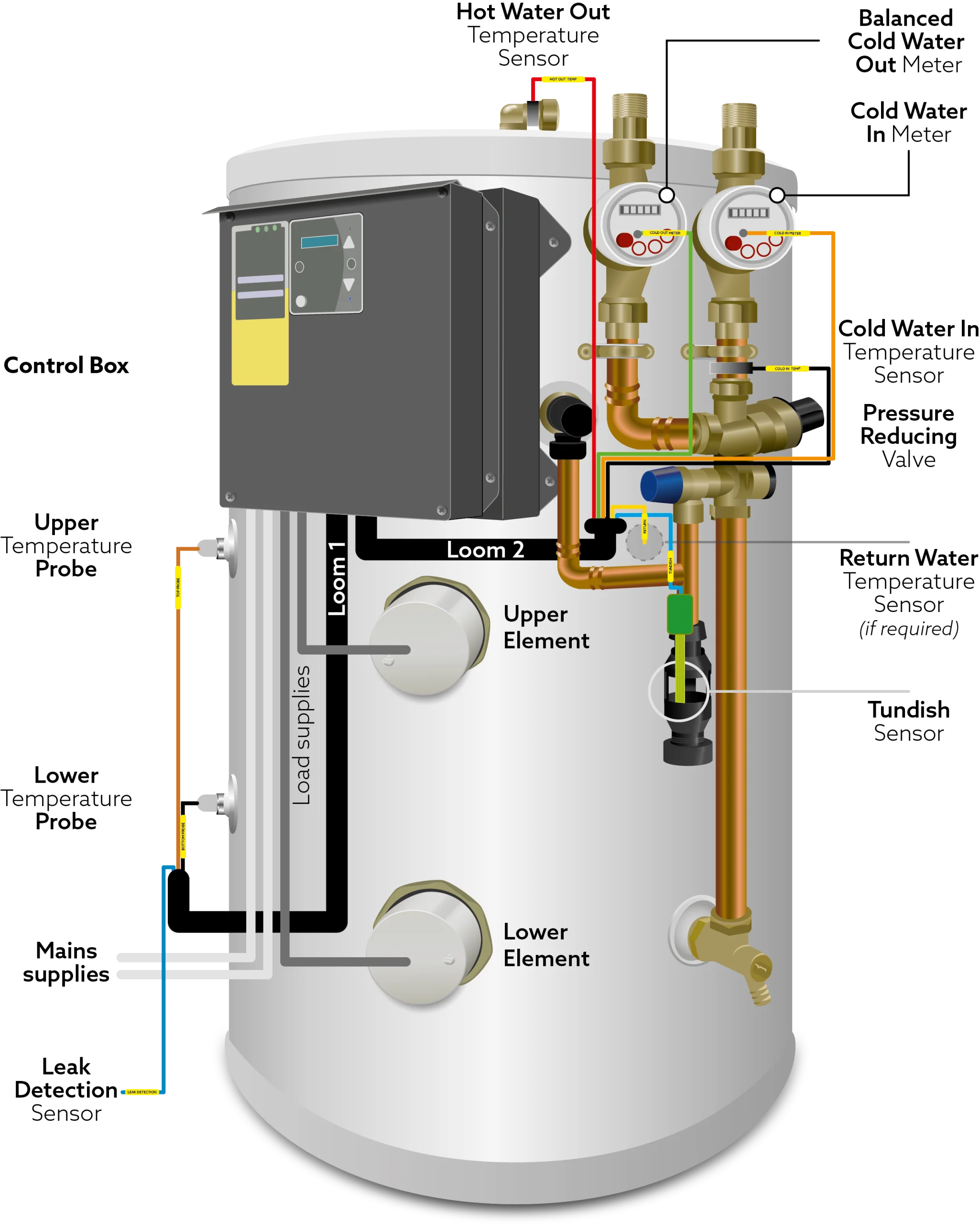Hot water is an essential part of daily life, providing comfort and convenience in homes, workplaces, and many other settings. Behind the scenes, however, ensuring a reliable supply of hot water requires careful regulation. One of the most important components in this process is the temperature sensor, which plays a vital role in monitoring and maintaining the water at the desired level.
The Purpose of a Temperature Sensor
A temperature sensor in a hot water tank is designed to measure the water’s heat level and provide feedback to the system controlling the tank. This function is crucial for two main reasons: comfort and safety.
- Comfort: By maintaining water at a consistent temperature, the sensor ensures that hot water is available whenever needed, whether for bathing, cleaning, or cooking.
- Safety: Without accurate monitoring, water could become excessively hot, posing a risk of scalding. Equally, if water remains too cool, it may not be effective for certain household needs and could even encourage bacterial growth.
In this way, the sensor contributes to both efficiency and protection, striking the balance between user comfort and system reliability.
How Temperature Sensors Work
Temperature sensors in hot water tanks typically operate using thermistors or thermocouples, both of which detect changes in heat. These sensors are installed in direct contact with the water or attached to the outside surface of the tank, depending on the design.
When the water temperature changes, the sensor sends a signal to the control system. If the water falls below the desired level, the heating element is activated. Conversely, if the water becomes too hot, the system switches off or adjusts accordingly. This automated process reduces the need for manual intervention, making the system more efficient and convenient.
Placement and Accuracy
The placement of a temperature sensor within the tank is critical for accurate readings. Sensors are often located near the bottom or middle of the tank, where the water temperature can be monitored consistently. Some systems use multiple sensors to measure temperatures at different points, ensuring a more precise understanding of the overall conditions.
Accuracy is important not only for comfort but also for energy efficiency. A poorly calibrated sensor may lead to unnecessary heating, increasing energy costs, or insufficient heating, which can affect water quality.
Safety Considerations
Temperature sensors are integral to protecting users from risks associated with hot water. Overheating can cause scalding injuries, particularly in vulnerable individuals such as children or the elderly. By providing accurate feedback, the sensor ensures that the water remains within a safe range.
In addition, water that is not heated to a sufficient temperature may foster the growth of harmful bacteria, including Legionella. Sensors help maintain the right balance, keeping water warm enough to prevent bacterial growth while avoiding excessive heating.
Energy Efficiency and Cost Savings
Another advantage of reliable temperature sensors is their contribution to energy efficiency. By precisely controlling the heating cycle, sensors prevent unnecessary use of energy. Instead of continuously heating water, the system operates only when needed. Over time, this reduces energy consumption and lowers running costs.
For multi-occupancy properties, such as student accommodation and hotels, this efficiency can make a noticeable difference in monthly utility bills. It also supports broader efforts to reduce environmental impact, as efficient heating systems contribute to lower carbon emissions.

SmartTank is the only hot water cylinder with factory fitted on-board controls and arrives on site pre-plumbed and pre-wired.


Several sensors ensure efficiency and help to keep water safe – helping compliance against legionella and scalding.
Maintenance and Longevity
Like any component, temperature sensors benefit from proper maintenance. Regular inspection ensures that they remain accurate and effective. Signs of wear, corrosion, or faulty readings should be addressed promptly to prevent wider issues with the hot water system.
In most cases, sensors are durable and long-lasting, but they may need replacement over time. Ensuring that a sensor is functioning correctly helps extend the lifespan of the entire hot water system, as the heating element and tank are less likely to be placed under unnecessary strain.
The Role in Modern Systems
In modern hot water tanks, temperature sensors often form part of advanced control systems. These may include digital thermostats, smart controls, or remote monitoring features. Such systems allow users to adjust and monitor their hot water supply more precisely, often through user-friendly interfaces or even smartphone applications.
This integration of technology enhances convenience while maintaining the core functions of safety, comfort, and efficiency. As systems continue to evolve, the temperature sensor remains a central element, ensuring that hot water is always available at the right temperature.
Conclusion
The temperature sensor in a hot water tank may be small in size, but its role is fundamental. By monitoring and controlling water temperature, it safeguards comfort, protects against safety risks, and promotes energy efficiency. Proper placement, maintenance, and accuracy ensure that this vital component performs effectively, contributing to the reliability of the entire system.
For anyone relying on a consistent and safe supply of hot water, understanding the importance of the temperature sensor highlights just how central this device is to everyday convenience. It is not merely a technical detail, but a key part of ensuring safety, efficiency, and peace of mind.
